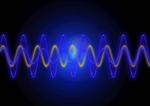Other

“EPFL scientists show that even a few simple examples are enough for a quantum machine-learning model, the “quantum neural networks”, to learn and predict the behavior of quantum systems, bringing us closer to a new era of quantum computing. Imagine …

“EPFL spin-off DePoly has developed a method for recycling polyethylene terephthalate (PET) at ambient temperature, even when it’s dirty or mixed with other plastics. The firm confirmed the feasibility of its method with a pilot capable of processing 50 …
“EPFL engineers have developed a silicone raspberry that can help teach harvesting robots to grasp fruit without exerting too much pressure. Raspberries are the ultimate summer fruit. Famous for their eye-catching scarlet color and distinctive structure, they consist of dozens …

“Quantum computing uses the principles of quantum mechanics to encode and elaborate data, meaning that it could one day solve computational problems that are intractable with current computers. While the latter work with bits, which represent either a 0 or …

“Jamie Paik and her team of researchers at EPFL’s School of Engineering have created an origami-like robot that can change shape, move around and interact with objects and people. By combining inspiration from the digital world of polygon meshing …

“EPFL engineers have found a way to control the interactions between excitons – quasiparticles that may one day transport data and replace the electrons in electronic devices. The engineers’ method involves applying an electric field to a two-dimensional (2D) semiconducting material …

“Thanks to a breakthrough in the field of magnonics, EPFL researchers have sent and stored data using charge-free magnetic waves, rather than traditional electron flows. The discovery could solve the dilemma of energy-hungry computing technology in the age of big …

“New imaging methods are being developed and adopted at a rapid pace in both research and industry. To equip EPFL graduates with the skills they’ll need, the School’s Center for Imaging is introducing a minor specifically in this …

“EPFL researchers have developed a temperature-modulating robotic system that can be seamlessly integrated into notoriously sensitive honeybee hives, providing both a never-before-seen view of honeybee behavior and a means to influence it. Honeybees are famously finicky when it comes to …

“Until now, the ability to make electronic devices faster has come down to a simple principle: scaling down transistors and other components. But this approach is reaching its limit, as the benefits of shrinking are counterbalanced by detrimental effects like …
